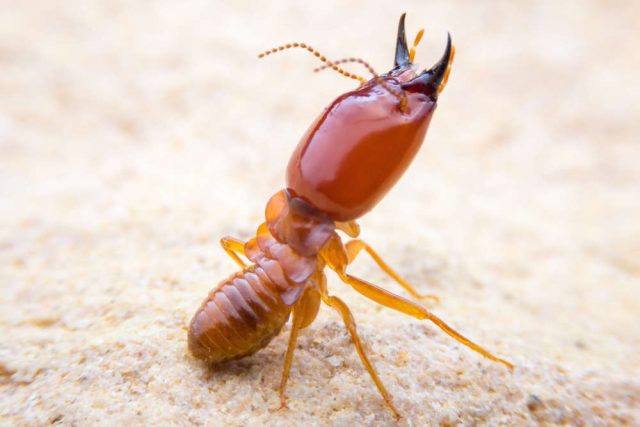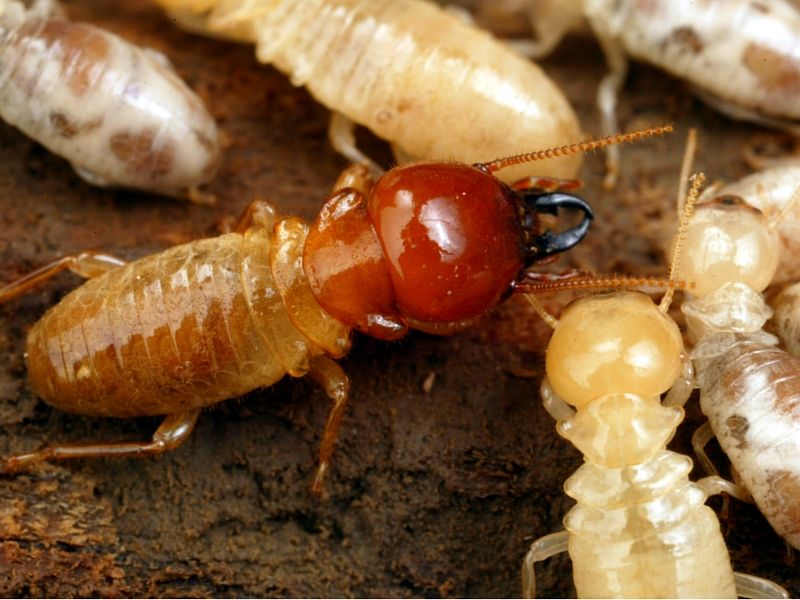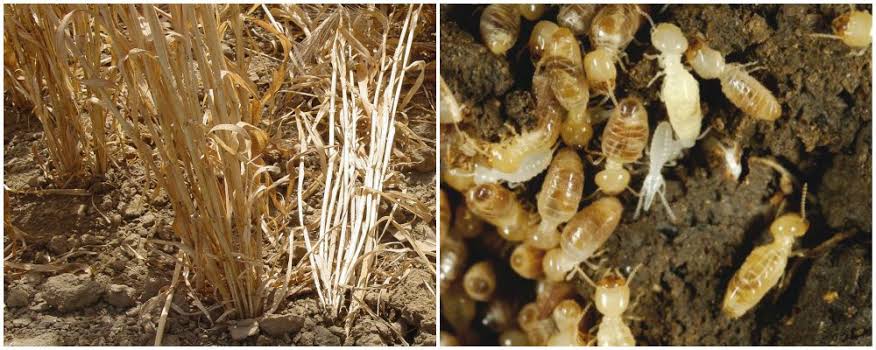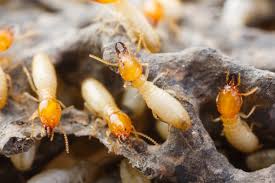- The problem of termites is seen in horticultural crops like pomegranate, mango, guava, Java Plum, lemon, orange, papaya, Gooseberry, etc.
- Insects tunnel into the ground and feed plant roots. When the outbreak is high, they also eat the stem and form a soil-like structure.
- In summer, deep plowing in the soil to destroy termites and always use good rotten manure (FYM).
- 1 kg Beauveria bassiana should be mixed with 25 kg FYM before sowing.
Fill the termite mound with kerosene so that all other insects along with the termite queen die. - Use chlorpyrifos 50 EC @ 250 ml per 10 liters of water in the holes made on the stems by the termites and add the same medicine near the roots of the tree in 50 ml per 10 liters of water.
Prevention of termite in sugarcane
- In areas where there is a lot of termite problem, this pest causes a huge loss in sugarcane.
- Termites can be confirmed by looking at the living termites and their built tunnel in the roots and lower stem of the affected plant.
- In summer, deep plowing in the soil to destroy termites and always use good rotten manure (FYM).
- 1 kg Beauveria bassiana should be mixed with 25 kg FYM before sowing.
- Use Chlorpyriphos 20 EC with irrigation @ 2.47 liters per hectare.
Management of termite
- Apply deep plowing before sowing.
- Use well rotten FYM in the field.
- Fill kerosene in a mound of termites.
- The seed should be treated with Chlorpyriphos (20% EC) @ 5 ml/kg of seed before sowing.
- Broadcast Chlorpyriphos (20% EC)@ 1 litre/Acre with any fertilizer
- Beauveria bassiana 1 kg/ acre
- broadcast Fax grannule 7.5 kg/ acre.
Share
Identification of termite on wheat crop
- Termites damage the crop soon after sowing and sometimes near maturity.
- They feed on roots, stems of growing plants, even dead tissues of plant-feeding on cellulose.
- The damaged plants dry up completely and are easily pulled out.
- The plants damaged at later stages give rise to white ears.
- Infestation is heavy under unirrigated conditions and in the fields where un-decomposed farmyard manure is applied before sowing.
Management of Termites in Wheat
Management of Termites in Wheat:-
- Termites damage the crop soon after sowing and sometimes near maturity.
- They feed on roots, stems of growing plants, even dead tissues of plant feeding on cellulose.
- The damaged plants dry up completely and are easily pulled out.
- The plants damaged at later stages give rise to white ears.
- Infestation is heavy under unirrigated conditions and in the fields where un-decomposed farmyard manure is applied before sowing.
Management –
- Apply deep ploughing before sowing.
- Use well rotten FYM in field.
- Fill kerosine in mound of termite.
- The seed should be treated with Chlorpyriphos (20% EC) @ 5 ml/kg of seed before sowing.
- Broadcast Chlorpyriphos (20% EC)@ 1 litre/Acre with any fertilizer.
Like and share with other farmers by clicking on button below
ShareLand Preparation in Green gram (Moong)
- To make a kharif crop, a deep plowing should be done with soil reversal solution and after 2-3 years after the weeding by cultivating it with a native solution or cultivator, keep the plates in the field and flatten it.
- For prevention of termite, the chlorpyriphos 1.5% DP of the powder is 10-15 kg /acre. At the time of preparation of the field should be mixed with soil.
- For the cultivation of summer moong, immediately after harvesting rabi crops, the farm should be plucked immediately after 4-5 days.
- After plaque, make 2-3 plough and make the farm flat and fried by placing it with a native solution or cultivator. With this, moisture is preserved in it and seeds get good germination.
Like and share with other farmers by clicking on button below.
Share




